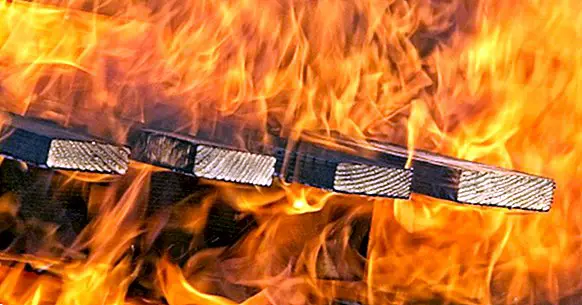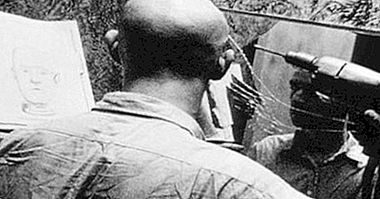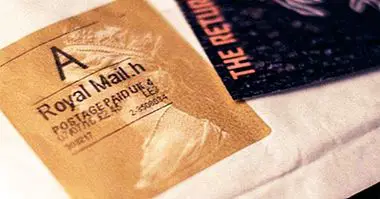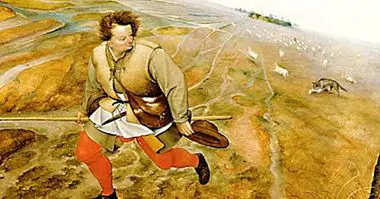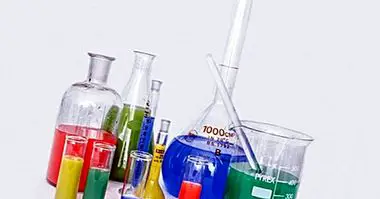The 6 types of fire, their characteristics, and how they appear
From the most remote antiquity, fire has always been as much an object of veneration as of fear and fear. This double vision of the flames comes from the fact that we are aware that fire is an element with the capacity to destroy, but also that it has facilitated survival by allowing us to light up, warm up, cook food and defend ourselves from animals and enemies. .
But not all fires are the same, but there are different classifications regarding the types of fire that we can get to meet . It is about this diversity of typologies that we are going to talk about throughout this article.
- Related article: "The 11 types of chemical reactions"
Fire: what is it and how is it generated?
Before entering to specify the types of fire that exist, it may be useful to stop and reflect on what fire is and how it is generated. Fire, rather than an element per se, is the manifestation of a process or a chemical reaction of combustion that is generated violently and more or less quickly.
It is an oxidation process at the exothermic level in which a material oxidizes at such a speed that it causes the transmission of light and heat energy, something that allows the appearance of flames as a product of combustion gas.
For a flame to be formed, it is necessary that there are and a series of factors without which the combustion could not come to appear. First, a fuel or material with the ability to ignite under certain circumstances is necessary, which will act as a reducing agent.
In addition to this another essential requirement is an oxidizer or material / element capable of causing combustion (the most common is oxygen). In this sense, the oxidant will act as an oxidizing agent
The third element, of great relevance, is the presence of some type of energy that allows combustion to start, such as the heat energy generated by friction. Finally, it is necessary for the reaction to be chain-linked in order to stay, or else the fire would go out. Flames and fire can be of different shades and colors and have different behaviors depending on what elements are serving as fuel and fuel.
Classification of types of fire according to the type of fuel
One of the most common ways, and in fact the most accepted and official worldwide, to classify different types of fire can be found in the one that takes as a criterion of differentiation the type of fuel that participates in the reaction. In this sense it is divided into five main classes, although sometimes a sixth has been considered.
A class
Class A fire is known as the combustion reaction that it originates from a solid fuel, and often of organic type . It is the type of fire that we make in bonfires or those caused in forests or living tissues. They can also arise from the combustion of plastics. It is possible to extinguish them with water, either jet or sprayed, although other methods such as dry powder or carbon dioxide can also be used.
- Maybe you're interested: "The 4 differences between organic chemistry and inorganic chemistry
Class B
Class B fires are types of fire which appear from the combustion of liquid materials with flammable capacity, or from solids capable of liquefying. It is the type of fire that occurs when combustion of alcohol, gasoline, wax or paint, among others. In this sense the fire of the candles or ancient lanterns would belong to this group. Its extinction requires dry powder , although water spray or CO2 can also be used.
Class C
Class C fires are considered to be the set of types of fire that are the product of the combustion of gases at high temperatures, such as those used in electrical appliances or in the kitchen. Thus, the combustion of methane or natural gas would produce this type of fire, which usually appears more quickly than in the case of previous . Reactions of this type require dry powder to be able to shut down.
Class D
Class D, in what refers to the types of fire, refers to those combustion reactions in which the fuel is some kind of metal or flammable metal powder. Examples of this are the one caused by magnesium . They should not be turned off with water since the reaction is extremely virulent, but special powder extinguishers should be used.
Class F or K fires
This last fire type are somewhat special, since they refer to the fire started before a fuel in the form of oil or grease, which is used in kitchen equipment.In Europe it was called class F fire, and in English-speaking territories it is known as K-class fires (kitchen or kitchen).
Although technically it could correspond with those of class B, this class was created to see that the behavior of the flames and the type of elements that can be used to extinguish them are different (For example, it could not be turned off with carbon dioxide). To extinguish it is usually used water extinguishers with some specific components.
Class E
Although technically it is not usually considered a type of fire apart from the previous ones but each case would be included in the type of fuel that corresponded, sometimes the type of fire of class E has been mentioned. This classification would mainly include the flames produced by alterations linked to elements that work or through which electricity circulates. The reason for its non-consideration as a real class is the fact that in the background what is burned are certain components that belong to previous classes . Turning them off requires carbon dioxide extinguishers, never water.
Bibliographic references:
- General Directorate of Civil Protection and Emergencies. (2013). Manual of first intervention in front of the fire by means of the use of portable fire extinguishers and equipped fire hydrants. Technical General Secretariat. Ministry of Interior. Madrid Spain.

